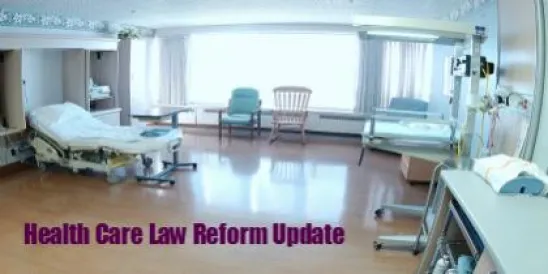With the FY 2020 proposed hospice rule, CMS proposes two material changes for hospice providers:
-
CMS proposes to shift approximately $500 million of hospice funding (2.7% of payments) from routine care to enhanced care payments (inpatient, continuous, and respite care); and
-
CMS also proposes, as a condition of payment, to require hospices to provide patients with a complete list (on request) of any services, drugs, or treatments that will be deemed unrelated to terminal illness (and therefore covered separately by Medicare).
In a prior post, we reviewed the proposed change for unrelated treatments. This post will review the proposed payment adjustments.
Relying on its obligation to reimburse hospice providers based upon cost of service, CMS proposes a material reallocation of the hospice budget – $500 million per year – from routine home care to enhanced care options (inpatient, continuous care, and respite care). For providers, this is not necessarily good news.
Routine home care days comprise 97.6% of hospice days of service, with enhanced care comprising just a small fraction (inpatient 2.7%, continuous care .4%, and respite.3% of care days). This makes sense, in so far as the enhanced care days are truly for crises or to provide limited breaks for family caregivers; and, enhanced care is materially more expensive for Medicare. For perspective, in 2018, CMS spent $17.5 billion on routine care, $1 billion on inpatient care, and just $250 million on continuous care and respite care combined.
CMS expresses concern that enhanced care days are under-utilized, hypothesizing that low reimbursement deters utilization. Specifically, CMS focuses on inpatient care, noting that some hospices cannot easily contract with hospitals to provide such care at current rates.
Using cost reports (notoriously unreliable documents), CMS claims that enhanced care reimbursement is from 30% (inpatient and continuous) to 160% (respite care) below actual cost. The ominous related finding is that, according to CMS, reimbursement for routine home care days is overpaid by between 15% (for 0-60 days) and 30% (for 61+ days; even though days 61+ have already been reduced).
For what it calls “initial” payment reform, CMS proposes to raise reimbursement for enhanced care days to close the estimated cost gap – increasing inpatient and continuous care rates by 30% and respite care rates by 160%. Overall, CMS estimates that this will cost $500 million (assuming no utilization changes). CMS cites its duty to make payment rates “align as closely as possible with the average costs hospices incur.”
To cover these increases, CMS proposes to take an equal amount of money out of routine home care days, $500 million. To get to $500 million, they have to reduce home care reimbursement by 2.7%, whether before or after day 60. This will balance the budget, assuming, as CMS notes, no uptick in amount of enhanced care days.
Providers might not be overjoyed at this proposal for these reasons:
-
It sets a poor precedent for CMS to tinker with reimbursement rates based merely upon cost report data. Cost reports have little relationship to economic reality: no salaries depend on them, no loans are given or denied based upon them, and cost reports do not measure satisfaction or value to patients.
-
If we take CMS at its word, that this is an initial foray into rebasing payments, then what comes next? The answer could be material reductions in routine home care rates. If CMS reduced routine home care rates using the same data, then CMS could slice as much as $4 billion or more out of the hospice program. This would kill or maim all but the heartiest CON-protected or large for-profit entities, emaciating the hospice benefit.
-
Increasing payment rates for inpatient care does nothing for hospice balance sheets. In almost every case, hospices hand over 100% of inpatient reimbursement to third parties (usually hospitals) who admit and care for patients during inpatient days. As a result, $300 million more for inpatient care amounts to a boost for hospitals, and a $300 million revenue reduction for hospices. Inpatient care is necessary, but this is a net outflow for providers trying to make ends meet.
-
Finally, providers understand from experience that enhanced care levels come with materially increased audit risk (ask VITAS). Auditors regularly scrutinize enhanced care days and conclude that only routine care days were justified, demanding incremental refunds. Although hospices will have paid hospitals and other caregivers to provide enhanced care (and taken a cap hit for such revenue) they may receive mail from auditors demanding refunds of the incremental reimbursement. It’s cruel to expose providers to this risk, especially where, in the case of inpatient care, they don’t keep, and can’t expect to recover, the money they hand over to hospitals to provide that care. Increased reimbursement rates increases the extent of this risk (and the prize for auditors).
CMS reports that several “industry representatives” worked with CMS on this project. Those representatives should be identified (or should self-identify) so that their interests can be assessed in broad daylight. Because, at bottom, these rebasing efforts are built on sinking sand (cost reports) and threaten to form a basis for harsh future action.
Hoping like Miracle Max to pass this first pill down the gullet, CMS coats it with chocolate:
CMS proposes to increase hospice reimbursement by 2.7% in 2020. For all but for-profit providers (who have a higher percentage of 61+ days and presumably lower enhanced care days on a percentage basis), this one-time increase will negate the cost of the reimbursement shift this year. In short, this won’t cost most providers money next year, even on a per diem basis. Caveat emptor.



 />i
/>i

